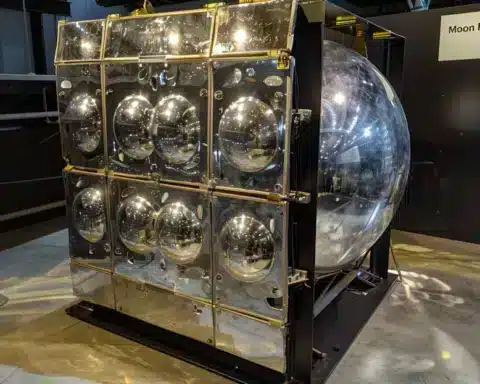A groundbreaking innovation in battery technology has emerged with the development of the world’s first carbon-14 diamond battery. Designed to replace standard lithium-ion batteries, this device boasts an unparalleled lifespan, potentially providing power for thousands of years. This groundbreaking innovation brings promise as a sustainable and reliable energy source for diverse applications.
The carbon-14 diamond battery generates electricity through a unique process. As carbon-14 decays into nitrogen-14, it releases beta radiation, which consists of fast-moving electrons. Encased within a specially designed diamond made of doped carbon, this radiation creates a continuous electrical current. Wires attached to the diamond efficiently transfer this power to connected devices, ensuring a steady and reliable energy output.
With a half-life of 5,700 years, carbon-14 provides exceptional longevity. This durability makes it an ideal choice for powering devices that require long-term reliability. For example, medical implants like pacemakers could benefit from these batteries, eliminating the need for replacement surgeries and enhancing patient safety. Similarly, instruments deployed in remote or extreme environments, such as slumbering volcanoes or deep-space missions, could maintain operation for centuries without human intervention.
The potential of carbon-14 diamond batteries extends beyond individual devices. Space exploration, in particular, could experience significant advancements thanks to this lightweight and efficient power source. Unlike traditional radioisotope thermoelectric generators, which convert the heat of radioactive decay into electricity, carbon-14 batteries generate power directly. This efficiency allows for lighter payloads and faster spacecraft, which could transform missions to the outer Solar System and beyond.
NASA’s Voyager probes, powered by plutonium-238, are a prime example of the limitations of current technology. With a half-life of just 87.7 years, the power sources for these decades-old spacecraft are already depleting. In contrast, carbon-14 batteries could support future space missions for millennia, potentially enabling exploration of nearby stars without the need for frequent power replacements.
Despite its immense promise, the journey to commercialize carbon-14 batteries is not without challenges. The energy released during carbon-14’s decay is relatively low, necessitating efficient use of the isotope to meet energy demands. Furthermore, while carbon-14 is abundant as a byproduct of nuclear waste, its extraction and refinement require advanced processing methods.
Researchers have previously demonstrated the feasibility of these batteries using small amounts of carbon-14. However, scaling up production to create commercial-grade batteries remains a complex task. In parallel, advancements in related technologies, like nickel-63 diamond batteries, are also being explored, showcasing the growing potential of this cutting-edge approach to energy generation.
With applications spanning from medical devices to space exploration, carbon-14 diamond batteries represent a significant leap forward in sustainable and long-lasting energy solutions. This innovation could redefine power systems for critical devices, ushering in an era of unmatched reliability and efficiency.





